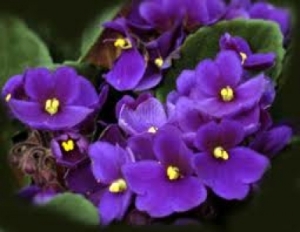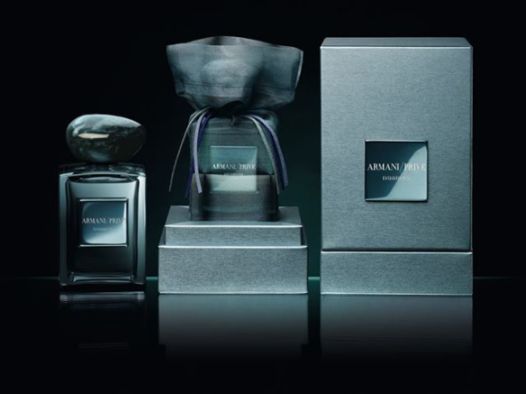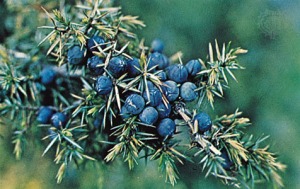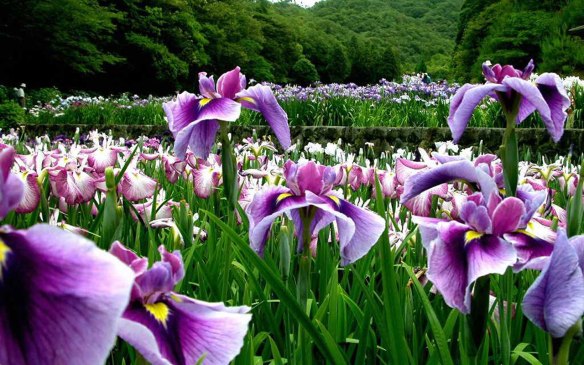 In the heart of the cedar forest, one tree towered above all the rest. Its dark, dry bark was peppered, and sometimes spiced with cinnamon, with cardamom that was so rich, it almost verged on chocolate, and with sappy sweetness. The gnarled tangle of its ancient roots protectively surrounded the forest’s greatest treasure: a large bunch of African violets that cast a purple glow that shone like a beacon. Its fragrant smell took over the darkness, lending the forest its name amongst the villagers: “Bois de Violette,” the forest of violets.
In the heart of the cedar forest, one tree towered above all the rest. Its dark, dry bark was peppered, and sometimes spiced with cinnamon, with cardamom that was so rich, it almost verged on chocolate, and with sappy sweetness. The gnarled tangle of its ancient roots protectively surrounded the forest’s greatest treasure: a large bunch of African violets that cast a purple glow that shone like a beacon. Its fragrant smell took over the darkness, lending the forest its name amongst the villagers: “Bois de Violette,” the forest of violets.
The smell was powerful but dainty, delicately airy but dense, and filled with layers that danced in a play of light and dark. The purple petals were bedazzled by fat prisms of dew, creating a watery, purple sweetness. The leaves were dark green, and spicy with the crackling pepper that matched the aroma of the trees around it. And its heart was so sweet, it was fruited, honeyed, and syrupy. From the freshness of succulent, fleshy, ripe peaches hanging on the vine to the sweetness of dark, stewed, glazed fruit, the violet syrup ran like purple blood through the veins of both the flower and the trees. A delicate mist of powder fluttered around the edges, like a darting Tinkerbell who popped up here and there, but who ultimately decided her presence wasn’t needed in the festive play of dainty floral violets, violet syrup, dewy, green, watery, violet freshness, and dark, peppered woods.
That is Bois de Violette, an eau de parfum that was created by Serge Lutens‘ favorite perfumer, Christopher Sheldrake, and released in 1992. Though it is primarily an expensive Paris Bell Jar perfume that is exclusive to Serge Lutens’ Paris headquarters, Bois de Violette came out at some point in a regular, import-version, 1.7 oz/50 ml bottle that is easily available and sometimes discounted online.
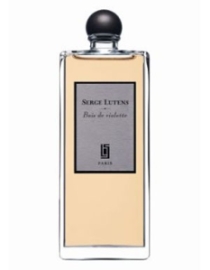 Serge Lutens describes Bois de Violette on his website as follows:
Serge Lutens describes Bois de Violette on his website as follows:
Full of vim and vigor.
Once again – and I’m repeating myself – femininity worked its way into this composition, by way of its leaves and a few flowers, whose color – a charming discovery made in a secluded thicket – won me over. A vigorous fragrance, it never gives up!
There is a reason why Uncle Serge says he’s repeating himself, and it’s something that is an important context for the fragrance. Bois de Violette is one of a quartet of “Bois” or wood fragrances to follow from Lutens’ ground-breaking, debut perfume, Féminité du Bois for Shiseido. It is a highly admired, much-loved fragrance which essentially served as the mothership for all the Bois siblings which followed.
Luca Turin, the famous perfume critic, has a very useful explanation of the history of the Bois line, their perfume structure, and how Bois de Violette differs from the rest. In Perfumes: The A-Z Guide, he talks of how the “woody-fruity structure of Féminité du Bois was first devised by the perfumer Pierre Bourdon, … and then passed on to perfumer Christopher Sheldrake, who developed it with Lutens… to keep it as dark and transparent as possible.” When Lutens decided to open his own perfume house, he needed more perfumes for his line, and decided to do variations on his uber-successful Féminité.
Enter the technique known as overdosage, widely propagated by Bourdon, in which a backstage component in one perfume is moved to the forefront in a new composition, a sort of rotation in perfume space. From Féminité du Bois came four variations, three of which create new effects by bold-typing one of the components of the original: musk (Bois et Musc), fruit (Bois et Fruits), amber (Bois Oriental).
[¶] The fourth, Bois de Violette, differs because the woody-fruity violet smell of methyl ionone recapitulates and intensifies the rest of the fragrance. Its rotation takes place around the center; the stained-glass mandala is perfected by a violet gem around which everything dances. [New paragraph spacing added.]
In the remainder of that Five-Star review, Luca Turin talks of the day he bought his bottle of Bois de Violette and how he felt as though he were “carrying the most precious object in the world.” He also adds how Bourdon’s fifth perfume sketch or proposal for the Féminité/Bois series accidentally wound up becoming Dior‘s Dolce Vita. But perhaps the truly intriguing part of the review is the sense one has of the usually acerbic, disdainful, haughty, and wholly unimpressionable Luca Turin — “His Majesty” as he is sometimes known — being completely humbled by Bois de Violette. It’s not something one sees very often in his summations, and it says quite a bit about the perfume.
Fragrantica classifies Bois de Violette as a Woody Floral Musk, and says that its notes consist of “violet, violet leaf and cedar.” I see that simple trio mentioned almost across the board in the note listings for Bois de Violette, but I also came across a few references to orange blossom. It intrigued me, especially as one never knows the full, official listing of ingredients in Serge Lutens’ fragrances. So, being a little OCD, I did some digging, and found a surprisingly lengthy list on a few sites. According to The Perfume House (which sells one of those rare, small 1.7 oz bottles of Bois de Violette), the perfume actually includes:
Cedarwood, violet leaf, candied plum, peach, orange blossom, rose, violet, cardamom, cinnamon, clove, musk, vanilla, honey.
It’s a very different matter, wouldn’t you say? In the vial, Bois de Violette smells of violets, its green leaves, and something dewy. On the skin, however, the perfume opens as a rich, complex bouquet of dried fruit, violets, violet powder, wet violet petals, the green of the leaves, the wet, damp earth surrounding it, and violet syrup. In the background, there are subtle flickers of orange blossom, peach, sweet tea rose, musk, cinnamon, and a drizzle of honey. The perfume feels simultaneously light, dark, airy, sheer, and thick– all at once. Yet, its projection is so subtle, delicate and light that I actually had to double my usual dose (to about 4.5 large, dabbed smears) to get all the nuances.
The delicacy of the violets is stunning. Fragile, dainty, watery, airy, and, yet, that dark, dense, syrupy shadow lurks behind them. In a strange way, it feels almost ominous, this pretense of delicate fragility with a big, hulking, dark shadow looming broodingly from behind the thicket of equally dark trees. The forest that initially felt a little in the distance starts to inch closer as the opening minutes pass by. It’s cedar, but it’s more than just simply dry, peppered woods. The tree is dark from spices like cardamom, and the merest hint of fiery cloves. The two work in conjunction with the sweetness of the dark fruits, the syrupy violet, and the drizzled honey to create an unexpected impression of something like cardamom-patchouli-chocolate. It’s subtle, muted and short-lived, but cardamom chocolate definitely comes to mind in those opening moments.
Also lurking in the shadows, in a slightly bewildering juxtaposition to the rest of those notes, is a hint of delicately feminine violet powder. It’s as if Snow White’s compact and violet-orris lipstick had suddenly fallen on the wet, damp floor of a dark, peppered, cedar-cardamom forest, lying nestled amongst dark, haunting violets in an interplay of feminine and masculine, light and shadows. I’m not a huge fan of powdery notes, no matter how light and sheer, so my favorite part of Bois de Violette in the opening minutes may be the more delicate aspect of the flowers themselves. Both the violets and its leaves have a wet, earthy greenness that feels wonderfully fresh and natural. It’s as if they’ve been spackled by dew and by hints of sweetly dark, fresh, early morning soil.
Yet, there are flickers of fruit that start to stir in the background, and which soon add a different nuance to the notes. At first, it’s merely the usual Sheldrake/Lutens base of candied prunes and plums, but soon, less than fifteen minutes into the perfume’s development, there is the peach. It feels bright, sweet, succulent but, also, as fresh as if it were still hanging on the tree. It’s lovely, and reminds me of a note in a vintage classic, but I’m hard pressed to figure out which one. It’s not the peachy intensity or potent sweetness of YSL‘s Champagne/Yvresse, nor of Hèrmes‘ 24 Faubourg, and certainly not Guerlain‘s Mitsouko, but there is something frustratingly familiar about it. Whatever the similarity, the peach note is a perfect accompaniment to the violets, adding to their delicate sweetness in a way that sometimes fits better than the darker, candied, syrupy plums or prunes.
Around this time, the honey begins its slow rise from Bois de Violette’s depths. It’s not heavy or dark, but, rather, sweet, fragrant, and almost floral in nature. Bois de Violette has suddenly turned incredibly fruited and sweet. In fact, the violets feel quite overshadowed in a distinct, individual way. No longer front and center, they lurk behind the honeyed fruits, both fresh and stewed, and the dark cedar trees infused with spices. The cedar is, to my slight regret, supplemented by ISO E Super and it’s initially strong enough to make my head throb a little. That said, it’s not too much as a whole, just enough to underscore the woodiness of the base and to amplify the note of pepper which begins to emerge. That subtle nuance of pepper is almost everywhere, from the delicate, green spiciness of the leaves to the cedar base, and it adds an interesting contrast to Bois de Violette’s floral, fruited, honeyed, wet, earthy and powdered tones.
The perfume’s aquatic undertone is really pretty. It’s as though Bois de Violette’s violet syrup can’t dispel the early morning dew on the flower’s petals. The watery, pastel effect is almost a little discordant amidst the peaches, stewed fruits, honey, and peppered woods. As that combination grows stronger, the aquatic element starts to grow weaker, along with the violet powder. Both recede to the background where they will pop up from time to time like a Jack in the Box, but generally they are just subtle, indirect effects on the perfume’s main composition.
The same thing happens with the green leaves which give a really good fight to the stronger, sweeter notes. They refuse to vanish completely, appearing every now and then in a lovely touch of slightly pungent, very peppered freshness. It feels as if you’ve taken a violet’s actual leaves, and crushed them between your fingers to release their subtle oil. That aroma remains throughout much of Bois de Violette’s development, but it’s rarely front and center as it is in the opening 30 minutes. Instead, it lurks in the background, a mere supporting player to the flower and cedared woods.
As time progresses, the notes wax and wane, hitting certain peaks before ebbing away like the tide. First it is the spices which melt into the background forty minutes into Bois de Violette’s development, no longer noticeable in an individual, distinct manner. Instead, they simply add an indirect effect to the richness and complexity of the sweet base. Then, it’s the turn of the musk. Exactly one hour in, the musk appears, feeling neither white nor dark and animalic. Instead, it’s sweet, and strangely indolic in a way. It grows and grows in strength for the next two hours, imbuing everything it touches with a fine mist, until it, too, fades into an amorphous, nebulous, background effect.
At the 90-minute mark, Bois de Violet starts to change quite dramatically in feel. The perfume feels more subdued, not to mention muted. All the edges have blurred, making the fragrance feel like an out-of-focus swirl of violet sweetness, musk, and dry, spicy, sweetened, peppered woods. It’s hard to know where one note begins and another ends, as they overlap into each other. There are no longer any distinct fruity, peachy, aquatic, leafy, green, spicy, or powdery touches that can be pulled out. Not all those notes are dead, however. Exactly two hours into Bois de Violette’s development, the powder re-emerges. It’s as if it had to wait for the forceful top layer — the dark woods, the fruit, the violet syrup, and the spices — to retreat in prominence before it had a chance to unfurl. The overall result is a soft, slightly powdery, violet fragrance with a hint of fresh, green violet leaves and a lightly sprinkling of pepper (and ISO E Super), all atop a base of violet syrup and woody, peppered cedar.
The perfume turns gauzier and more abstract with every hour. Around the 3.75 hour mark, Bois de Violette is a nebulous, amorphous blend of violets, lightly dusted with a hint of powder and musk, and infused with a vague sense of something green. It’s a soft, muted, sheer, airy combination that floats like transparent purple gauze above the skin. A short time later, at the five-hour mark, Bois de Violette is nothing more than an abstract, sweet, floral musk.
The perfume remains that way until its very end, exactly 7 hours from its start. The sillage was initially moderate before fading to something very soft, discreet, and unobtrusive. And, remember, I had to apply double my usual amount with Bois de Violette (to almost 5 very large dabs in all) to get those numbers. On Fragrantica, there is a mixed assessment of both the projection and duration, with the most votes (10) ascribed to “moderate” longevity and soft sillage (10), followed by moderate (9). One commentator notes that Bois de Violette lasted a mere 2 hours on his skin, but 8 hours on his clothes, with sillage that dropped after 10 minutes to become extremely close to the skin. I suspect that Bois de Violette is a fragrance which will require a lot of sprays to really last, but which will always be extremely discreet and unobtrusive in projection.
I like Bois de Violette, but something holds me back from being really impressed. I can’t pinpoint what the problem is. Perhaps it’s the way Bois de Violette went from being so incredibly sweet at first, to becoming a little too blurry, nebulous, and simple. Perhaps it’s because I felt as though the delicate, fresh, natural beauty of the violet flower was initially overshadowed and, then, later, felt so vague that it was like grasping at the wind. And, yet, none of those characterisations are the full story or, maybe, even fair. Bois de Violette is extremely pretty at times, deliciously mouth-watering at other times, and almost delicately…. something. Perhaps if the floral and green aspects to the violet were stronger, I could use the word “haunting,” but Bois de Violette never arises to that level for me. Maybe if it were less syrupy sweet for a good chunk of its development, it could feel like the stained glass window that Luca Turin references with such admiration. Perhaps it’s because the perfume seems like all things violet at once, and, yet, it’s not one single thing at all. It tries to be the full violet from petals to leaf to the earthy damp soil and the trees around it; but it’s also fruited and syrupy, peppered and woody. Maybe it should stick to one thing or the other? Or, maybe, I would have been happier with a more delicate, haunting, pure floral, a violet version of the flowers in the lyrical, stunning, moving and utterly poetic Lutens’ beauty, De Profundis. I don’t know what it is about Bois de Violette, because I certainly like it and would wear it, but I’m not swept off my feet.
I get the sense that many in the perfume community see Bois de Violette as the most perfectly balanced, beautiful violet fragrance around. Whether it’s the handful of bloggers who have reviewed the scent, or those on MakeupAlley who, by and large, adore the fragrance, Bois de Violette is much-loved. On MakeupAlley, for example, 72 people give the perfume an overall rating of 4.2 out of 5, which is pretty high for such a large number of reviews. The general feeling is that the flowers are dark, sexy, sweet, and perfectly countered by the cedar woods. For example:
- Sexy, dark violets, perfectly balanced – never cloying or candied and never so intense as to hit people over the head.
- There’s a period of time in the beginning when the violets are just too much, but once that settles down, this is a beautiful violet-wood fragrance, perfectly balanced and blended.
- My favorite Serge Lutens. Sweetened (but not overly sweet) violets and woods, mainly cedar. So smooth! It’s warm and snuggy, perfect for winter. Strong yet close to skin, just the type of scent I adore.
- Candied violets and cedar. Starts out playful and nostalgic, babyish in a vintage way.The violets are effervescent and floating, just loosely tethered to the very grounded cedar. On me, the violets don’t settle down for hours, but when they finally nestle into the wood, it is revelatory, surprising, with perfectly balanced almost austere taste. The scent is romantic and old-fashioned, but not quite a grandmother scent. Instead, it’s like digging in the attic and finding an old wooden chest, filled with mementos of your grandmother’s secret wild life.
- What a beauty this is! An exquisitely balanced composition of cedar and violet – neither too sweet nor too dry – Bois de Violette has a a wonderful mellow tone to it. The scent is clean, focussed and rounded; it is not a candy-sweet violet or over-green on me, and there is no powder – this violet is deep and true to life. The cedar, too, is warm and pure. Bois de Violette is a wonderfully elegant, tranquil scent[.]
- A singlular and unique composition of cedar, violet leaves and violet flowers. Ethereal, vivacious and sparkling.
I was stunned at the super intense cedar note that came through at first. It sure is a woody blast and in those first few seconds lacks any violet. The cedar note is at first so intense that it is almost body odorish but in a good way. Then the violet sweetness emerges and remains playful throughout the rest of the development. The fragrance becomes super sexy[….]- I don’t get a pronounced cedar note like others here. I smell REAL, fresh violet in all it’s glory. [¶] Not typically a lover of florals, I would have to say that this is the best violet scent that I’ve ever had the pleasure to sample. [¶] Full bottle worthy!
Over at Basenotes, Bois de Violette receives equally high numbers and, yet, I get the sense that people are not quite as enamoured. Moreover, “well-balanced” does not seem to the majority consensus, by any means! Out of 24 reviews, 75% give it five stars, while 25% give it three stars. The fragrance is repeatedly compared to its mother, Féminité du Bois (which many find to be extremely similar), but also to some other violet perfumes. Yet, despite those five-star ratings, quite a few commentators seem to prefer the mothership perfume. As for the “candied” sweetness of the violets, a number of people find it to be “cloying” or excessive. (“Killer sweetness” was one description of it, and it was not said as a positive.) On occasion, there will be a handful who find the note to be fresh and natural, but they aren’t many. Obviously, how Bois de Violette manifests itself will all depend on your skin chemistry, and the extent to which it amplifies or mutes the sweet basenotes. Mine always opts for amplification, and, clearly, Bois de Violette with its syrup is no exception.
Though I wish the perfume were a little fresher, I do recommend Bois de Violette, especially for those who like somewhat sweet fragrances but not full-blown gourmand ones. The cedar, green, peppery, and watery elements provide some balance, depth, and complexity, ensuring that Bois de Violette is more than just candied, syrupy violets. And, it differs from many violet fragrances out there which are primarily powdery and, therefore, somewhat old-fashioned in feel. Bois de Violette can be worn by men and women alike, it’s versatile for day or night, and its low sillage makes it extremely office-appropriate. I’m somewhat dubious about the fragrance’s longevity, though the fact that you can buy it relatively cheaply in a regular bottle (as opposed to the exclusive, uber-expensive Bell Jars) means that you can spray on enough of the perfume to give it greater duration.
All in all, it’s definitely a fragrance worth looking into. If you’ve never tried Serge Lutens before, Bois de Violette is a surprisingly wearable fragrance that could be a good entry point into the line. And, for those who are experienced perfumistas, the range of the violet’s nuances — from petal to leaf, and all the things around it — may win your heart.







